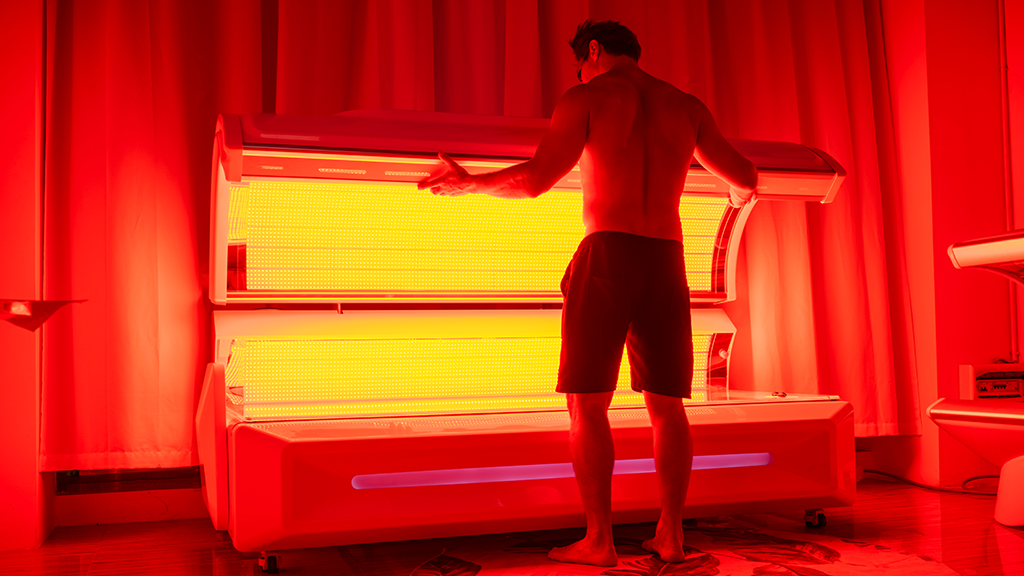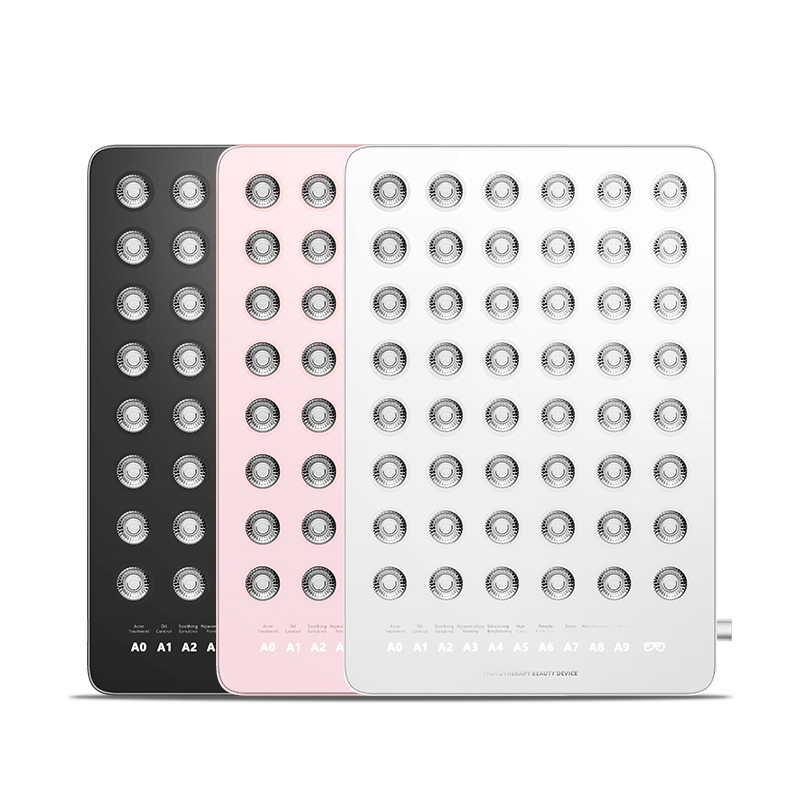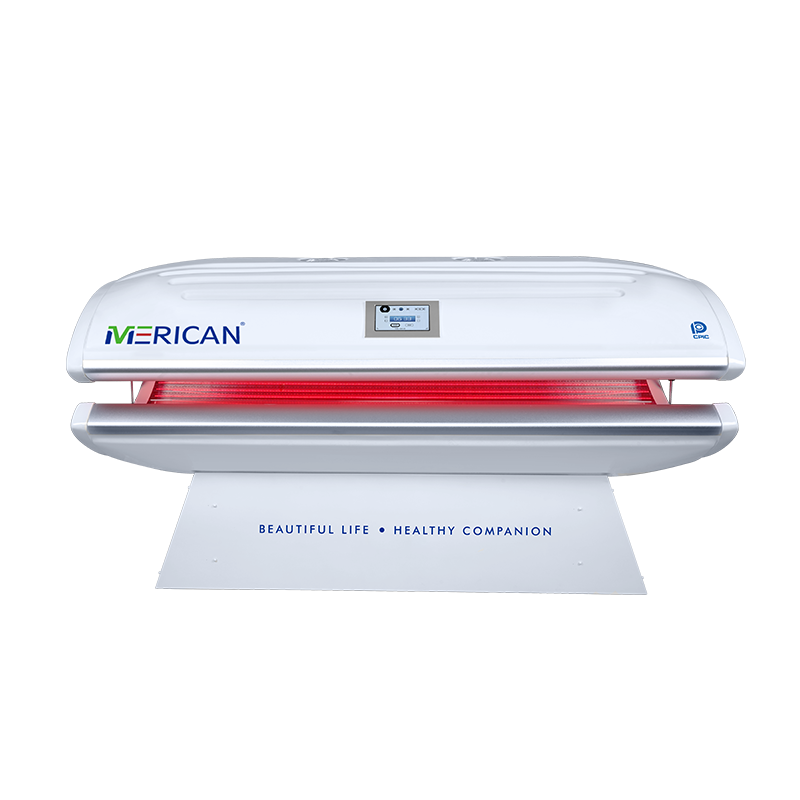The red light efficacy: whitening and rejuvenating skin, diminishing stains, smoothing wrinkles, tightening skin, improving dullness, delaying aging,ecc.
Indications:skin care, High blood lipids,high blood pressure and high blood sugar,acne,various pains,various inflammations,anxiety and depression,eczema,ecc.
How red light can affect your sleep
Circadian rhythms — the body’s internal clock controlling our sleep and wake cycles — respond “to light as a signal to be awake, and to dark as a signal to fall asleep,” according to the US Centers for Disease Control and Prevention.
We’re most sensitive to blue-wavelength light — the kind emitted from phone, TV and laptop screens, as well as the sun — and it’s the light that’s been found to suppress the release of the sleep hormone melatonin.
“During the day, that’s when you definitely want the blue light because you want to suppress melatonin during the day when you should be awake,” Dasgupta said. “That’s why we always say, ‘Get out and be exposed to good sunlight when you wake up in the morning.’”
Research on red light and sleep
Since blue light inhibits the release of melatonin, the hypothesis underlying research on sleep and red light — the color on the opposite end of the spectrum — is that red light might encourage the release of melatonin, Dasgupta said.
But there are only a few studies in healthy human participants on red light and sleep, the majority of which are small in size, che vanno da 10 A 30 participants each. And it seems only a couple of these studies have found such an association.
In a 2012 studio, China-based researchers assessed the effect of red light therapy on the sleep quality and performance endurance of 20 female basketball players. Half the players received 30 minutes of full-body irradiation from a red-light therapy machine that looks like a tanning bed. The researchers found this group had greater improvement in sleep and serum melatonin levels than the placebo group, which didn’t receive red light therapy.
Given the limited research, “this is one of those situations where there’s a sleep ‘hack,’ but there’s no evidence behind it really,” said Joshua Tal, a New York City-based psychologist specializing in sleep problems. “I don’t see the benefit.”
And other studies have found a very different effect. “We have shown that you can actually alert the brain by exposing people to that saturated red light,” said Mariana Figueiro, director of the Mount Sinai Light and Health Research Center in New York City.
UN 2019 study led by Figueiro looked into whether delivering red light to closed eyes during sleep — using a red light mask — and to open eyes upon waking — via red light goggles — reduced sleep inertia among 30 adults. Sleep inertia is a circadian process that modulates memory, Umore, reaction time and alertness upon waking, according to a 2015 studio. Some people experience impaired performance and grogginess over this period of time, and the effects of sleep inertia typically subside after 15 A 60 minutes but can last up to a few hours.
In Figueiro’s study, the authors collected data on participants’ sleepiness — which they self-reported — as well as auditory performance and cortisol levels on three Friday nights over three consecutive weeks. They found red light delivered through closed eyes while the participants were sleeping mitigated sleep inertia upon waking.
Two other small studies by Figueiro have also found red light to induce alertness.
“I would not make the claim that (luce rossa) promotes sleep,” said Figueiro, who’s also a professor in the department of population health science and policy at the Icahn School of Medicine at Mount Sinai.
Red light’s impacts on sleep
Those who tout red light as beneficial for sleep have likely conflated red light’s low tendency to suppress melatonin with improving sleep — which isn’t the same thing, Figueiro said.
“The only thing that you could argue is that what it’s doing is, if you give that red light in the evening prior to sleep, you’re minimizing the disruption of the circadian system, because disruption of the circadian system occurs with bright or blue light,” Figueiro said. In altre parole, it might be that any benefits come from replacing the light you’re exposed to before sleep with red light, rather than adding the latter during sleep. “And that may be what leads to better sleep.”
Since red light doesn’t affect the circadian system, the potential for red light to induce alertness, as Figueiro found in her research, is “most likely affecting your brain through pathways other than the biological clock,” she said. The circadian system and brain alertness aren’t one and the same.
For melatonin or the circadian rhythm to be affected by light, there has to be a light that goes through the suprachiasmatic nuclei — the brain structure where the biological clock is located — and elicits a circadian response, Figueiro added.
Red light generally doesn’t do that, so “what we think is happening is the (luce rossa) is actually affecting parts of the brain associated, Per esempio, with the visual system,” Figueiro said. “Or it could be associated with the amygdala or other parts of the brain that are not necessarily through the biological clock.”
Complessivamente, while red light doesn’t necessarily promote sleep, it is less disruptive than other types of light, experts said.
The bottom line is that when it comes to sleep, “what’s better than red light is no light,” Dasgupta said. But if you’re going to have light, such as a night light, on for any reason while you sleep, you might as well use ones that will be more conducive to sleep, he added — which is where red light can come in handy.

























